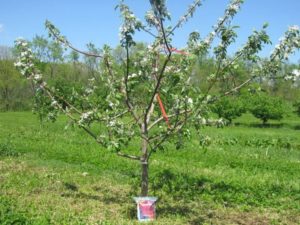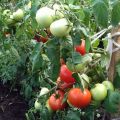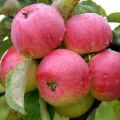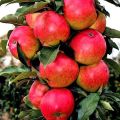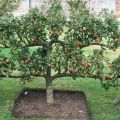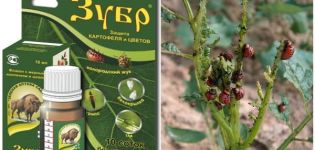Detailed description and characteristics of the apple variety Nastenka
An apple tree with a late fruiting date Nastenka was obtained by L.A. Kotov as a result of pollination of the Anis purple variety with a mixture of pollen from two tall fruit crops: Rainbow and Samotsvet. It is recommended to grow in the southern part of the Urals, as the dry climate is suitable for the fruit crop. When zoning in conditions of prolonged bad weather, the tree is affected by scab.
Variety history
L.A. Kotov is a famous breeder who has devoted his life to developing new varieties for regionalization in the Urals. Due to its maternal characteristics, the new variety is famous for good fruiting and high winter hardiness.
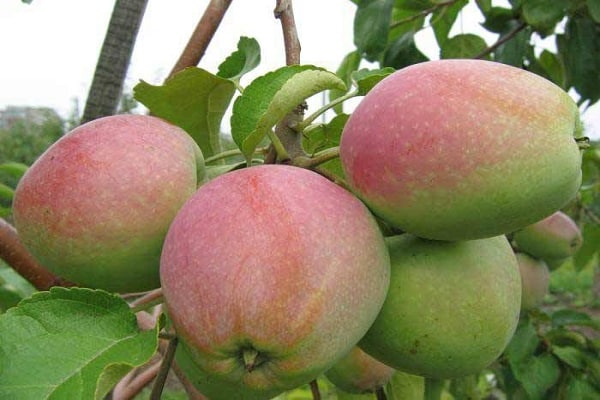
Nastenka is currently being tested for the possibility of growing in the Urals and in the Sverdlovsk region, so she has not yet been included in the State Register.
The tree easily tolerates frosty winters, but does not tolerate high humidity, therefore, the choice of a place for planting Nastenka must be approached responsibly.
Description
Nastenka is a late apple tree, it begins to bear fruit only 5 years after planting the seedling. Such a biological feature of the variety as early maturity affects the quick recoupment of the costs spent on laying the garden.
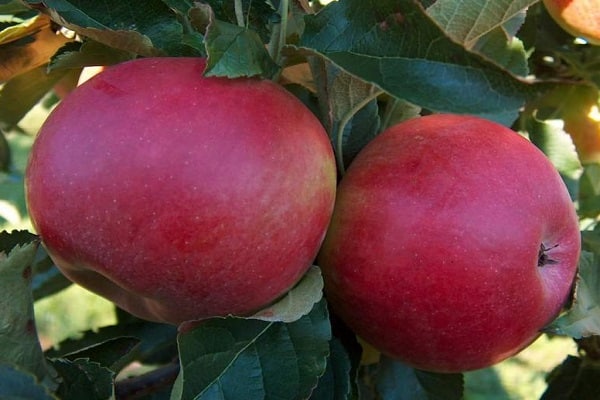
Variety advantages:
- resistance to low temperatures;
- good productivity;
- large-fruited;
- long shelf life of apples.
The disadvantages include weak immunity to scab disease, especially when grown in conditions of high humidity and in prolonged rainy weather. In addition, Nastenka is characterized by the frequency of fruiting.
The surface of the fruit is smooth, dry, with a well-visible waxy coating. The skin has an intense, blurry striped, brick red blush.
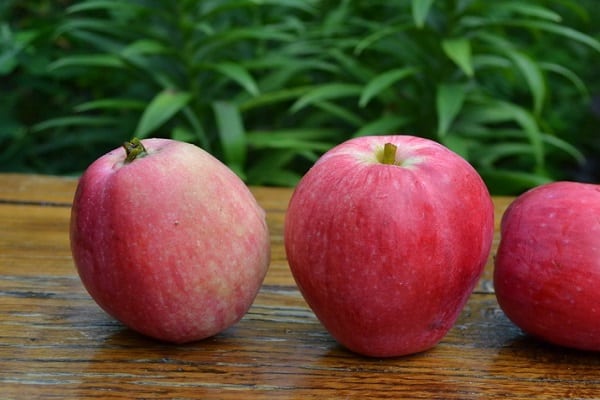
Fruits are medium in size and large. The average weight of one apple reaches 150 g, the weight varies between 100 g and 180 g. One-dimensional fruits have a flat-round or round-conical shape.
Seed chambers are tightly closed, rarely have small slits. The pulp is greenish-yellow in color, after ripening it acquires a yellow tint. The fruits are very juicy, rich in nutrients. The apples taste sweet and sour.
In the description, one can note a short stalk, a small funnel with inclusions of light bronze color. The saucer is smooth, not deep, rather narrow. The calyx is closed, the heart is small, like an onion.
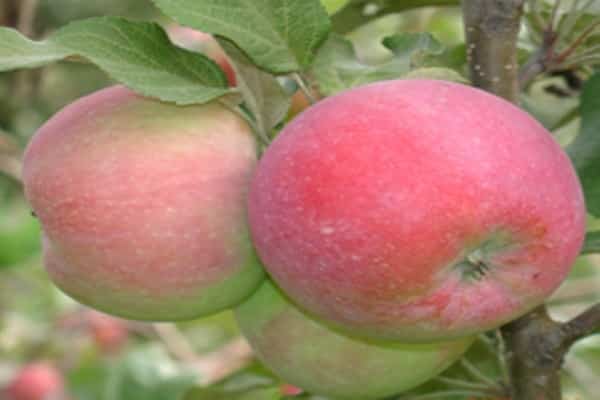
The chemical composition of the fruits of the Nastenka variety:
- 13.5% - dry matter;
- 0.85% sugar;
- 100 g of fruit contains 18.9 mg of ascorbic acid;
- 0.85% - titratable acids.
Due to its rich chemical composition, Nastenka's apple tree is classified as a table variety.

Specifications
Only if the agrotechnical methods of cultivation are observed, Nastenka's apple tree will please with the sweet and sour taste of its fruits.
Appearance
The crown of a tall fruit crop has a back-pyramidal, slightly sparse shape. The branches are straight, in relation to the trunk are located at an angle of 40-55 °.
Shoots are straight, pubescent, of medium thickness, brown, rounded. Medium, dark green leaf plates with finely corned margins sit on medium petioles with small saber-shaped stipules.

Yield
The apple tree is characterized by the frequency of fruiting, when it bears fruit, it gives a high yield. Non-annual fruiting is considered the main disadvantage of Nastenka's fruit culture.
To increase yields, it is necessary to inspect the fruit crop in time for diseases and pests. Poor weather conditions also reduce yields.
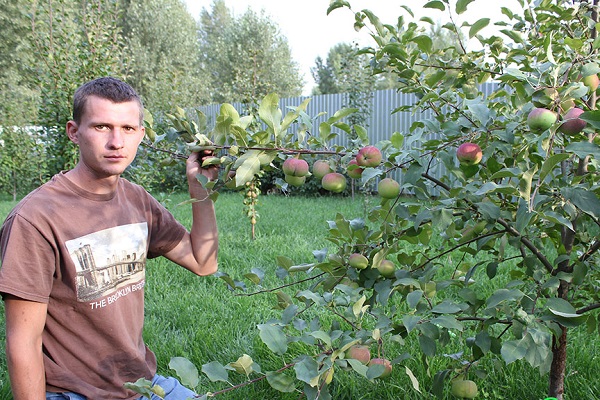
Dimensions of the tree
The fruit tree is considered tall, so it is important to select a free area for growing. It should be noted that without pruning, the tree can reach 5 m in height, which makes picking apples much more difficult.
Winter hardiness
The unpretentious variety is characterized by high resistance to low temperatures, can easily survive frosty winters with temperatures below -45 °, but provided that it is planted in a well-lit area, closed from strong winds.
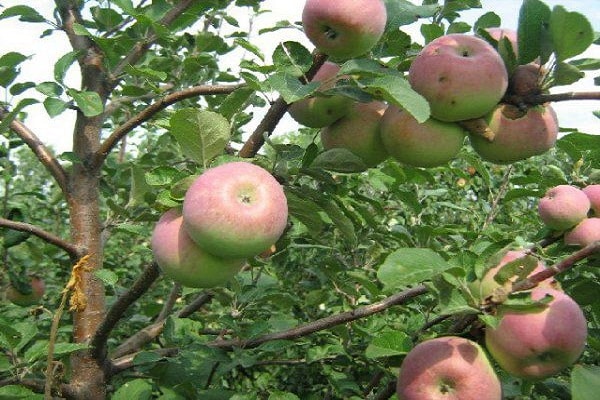
Diseases and pests
Breeders consider resistance to diseases such as scab to be an important indicator of the viability of apple varieties. Nastenka has low immunity to this disease, especially when cultivated in high humidity conditions.
If the weather is bad for a long time, it often rains, black blurry spots of fungal origin appear on the fruits and leaves, which spoil not only the appearance of the fruits, but also affect their taste. If severely damaged, the entire crop can rot.
It is recommended to spray trees against scab with a 7% urea solution. Not only the crown of the plant should be processed, but also the fallen leaves should be sprayed.
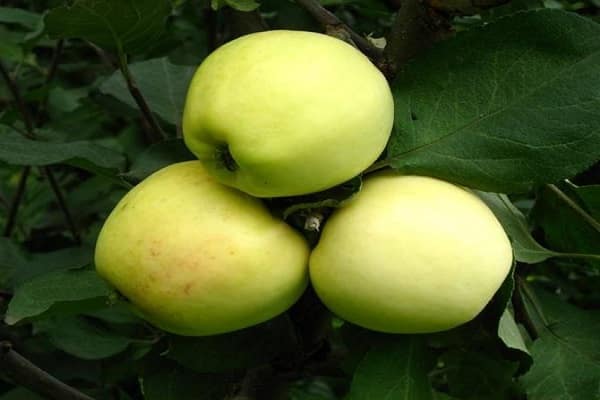
Of the pests Nastenka is annoyed apple moth, garden moth and aphid. The moth is the most dangerous pest. Over the summer, it can destroy most of the crop, especially if the weather is dry and hot. From the folk methods of struggle, an infusion of wormwood is recommended.
The caterpillars of the garden moth are so voracious that they can destroy the entire crop of fruit trees in a season. For prevention purposes, it is necessary to promptly remove dry and damaged branches, remove and burn fallen leaves, plant remains. Insecticides are effective against moths.
The appearance of aphids is easy to notice: as a result of its vital activity, the leaves acquire a reddish tint and curl. To fight, a decoction of garlic, celandine and conifers is used.

To combat silkworms, fruit sapwood, hawthorn, you can use infusion of tomato tops or infusion of wormwood.
The timing of flowering and ripening of fruits
The apple tree Nastenka is covered with fragrant flowers in mid-May or early June. It should be noted that the variety itself is sterile, therefore, for fruiting, you need to take care of planting pollinators. There is no specific pollinator variety for Nastenka, therefore, it is recommended to plant late autumn varieties, the flowering of which also occurs in May-early June.
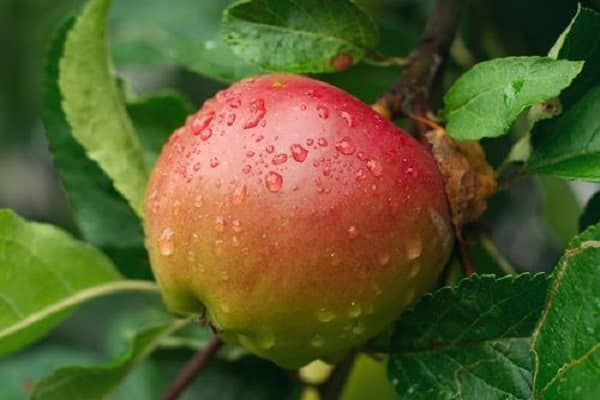
Winter varieties of apple trees cannot be pollinated with summer varieties! When planting pollinators, there should be no more than 50 m between trees.
Harvesting takes place in mid-September. At this time, the nutritional value of the fruits is very low, they taste sour, and the flesh is firm.After a few months, the apples come to full maturity, then you can fully enjoy the taste.
Subject to the storage rules, apples retain their taste and nutritional value until the end of March.

The fruits contain: ascorbic acid, organic acids. In winter, a person simply needs vitamins, so it is easy to replenish them with winter apples. The fruits are suitable for fresh and canned consumption.
The opinion of the gardeners of the Urals about the sweet taste of fruits with a pronounced sourness is ambiguous: some consider it poorly identified, others believe that the taste is not deep enough. Assessment by tasters is equal to 3-3.5 points.

Growing regions
For cultivation of the variety, the Sverdlovsk region is preferable, since Nastenka is an Ural apple tree that prefers a dry climate.
Cultivation areas of the variety:
- Chelyabinsk.
- Omsk.
- Kirovskaya.
- Perm.
- Nizhny Novgorod.
- Sverdlovsk.

In addition, the variety is recommended for cultivation in Bashkiria and Tatarstan. Every year the apple tree more and more adapts to the temperate climate of the middle zone.
An apple tree with a cute name Nastenka is considered an unpretentious fruit tree, however, in order to obtain a good and plentiful harvest, it is necessary to follow the agrotechnical methods of cultivation, in relation to this variety.


